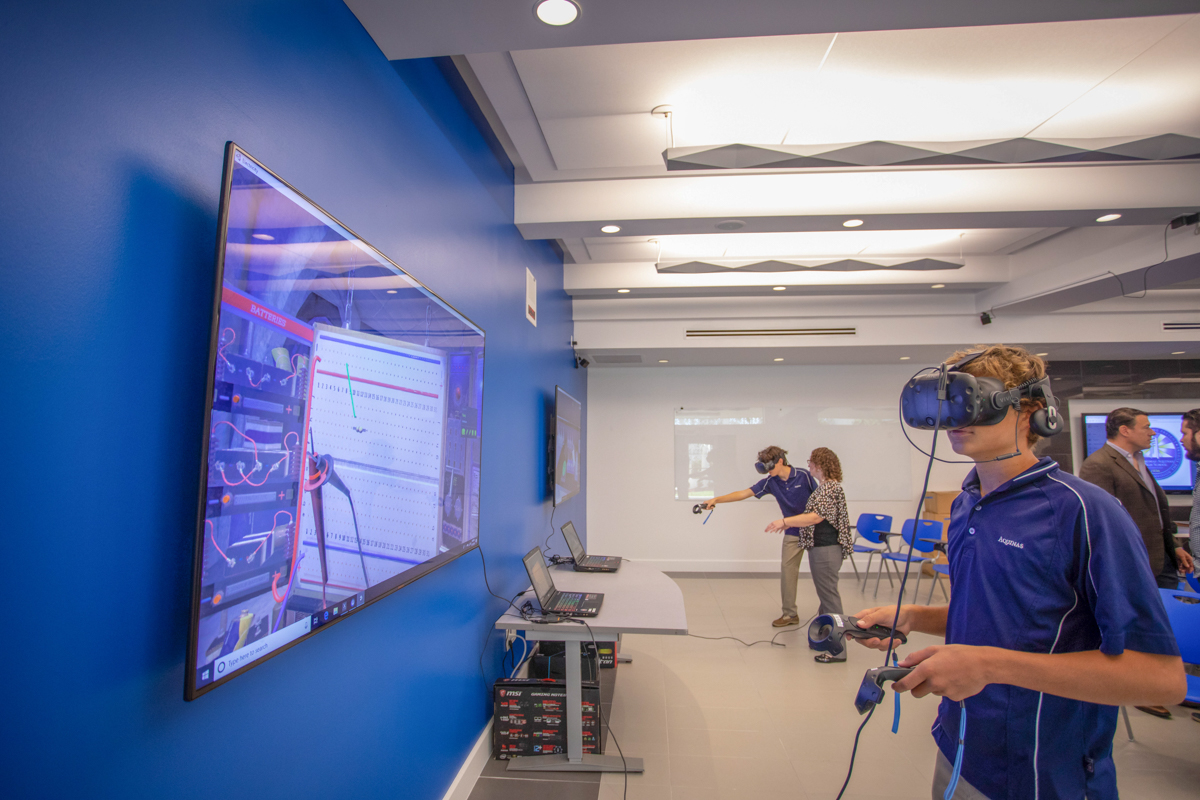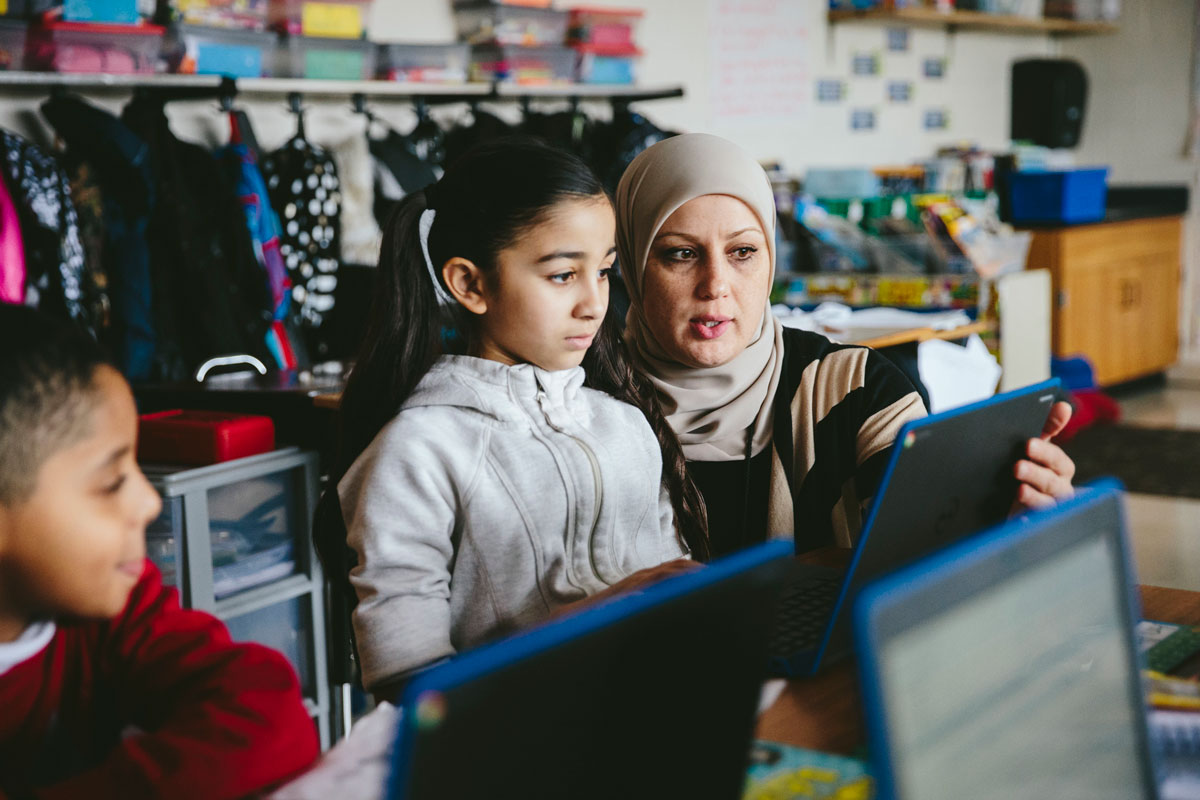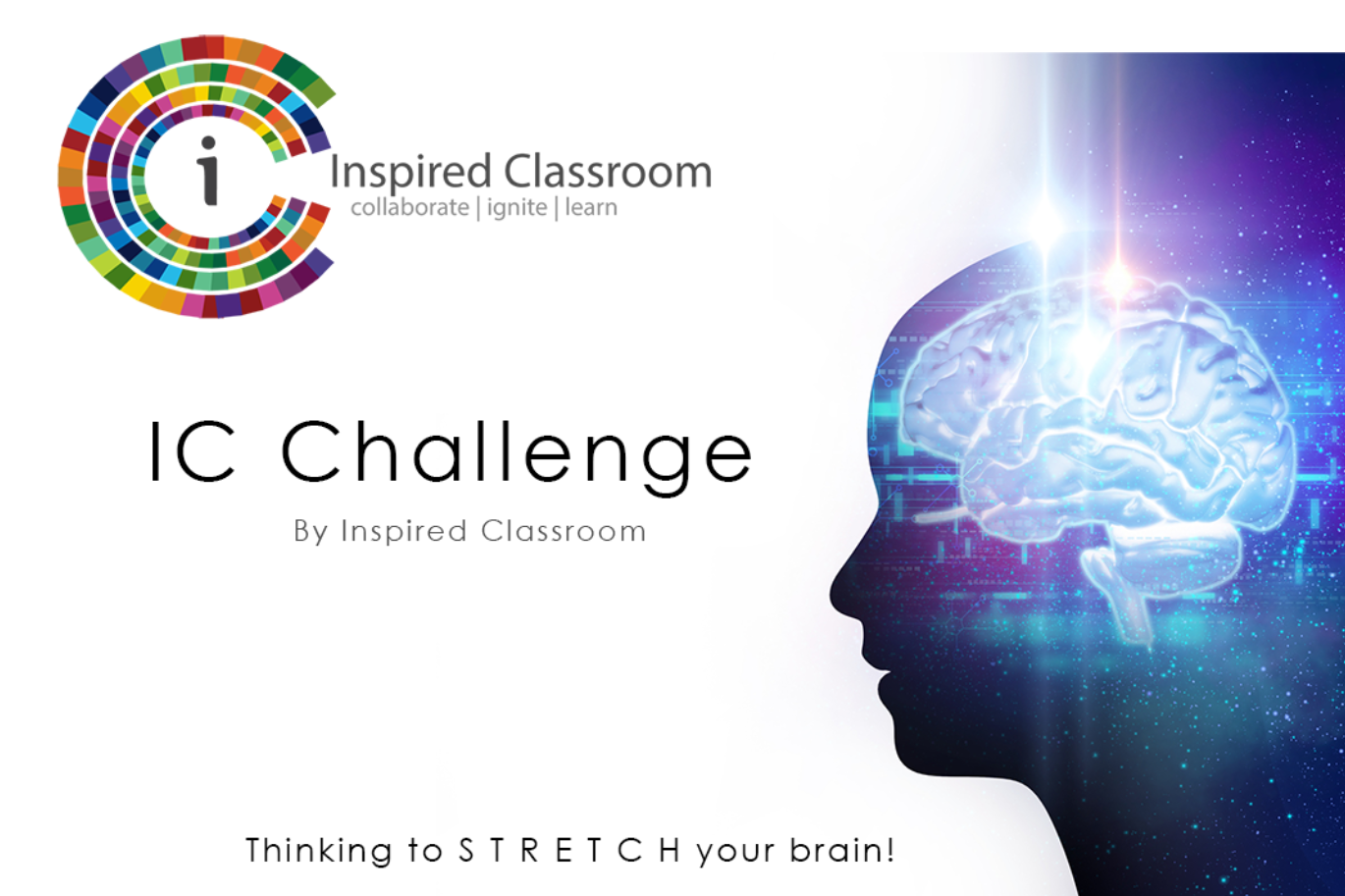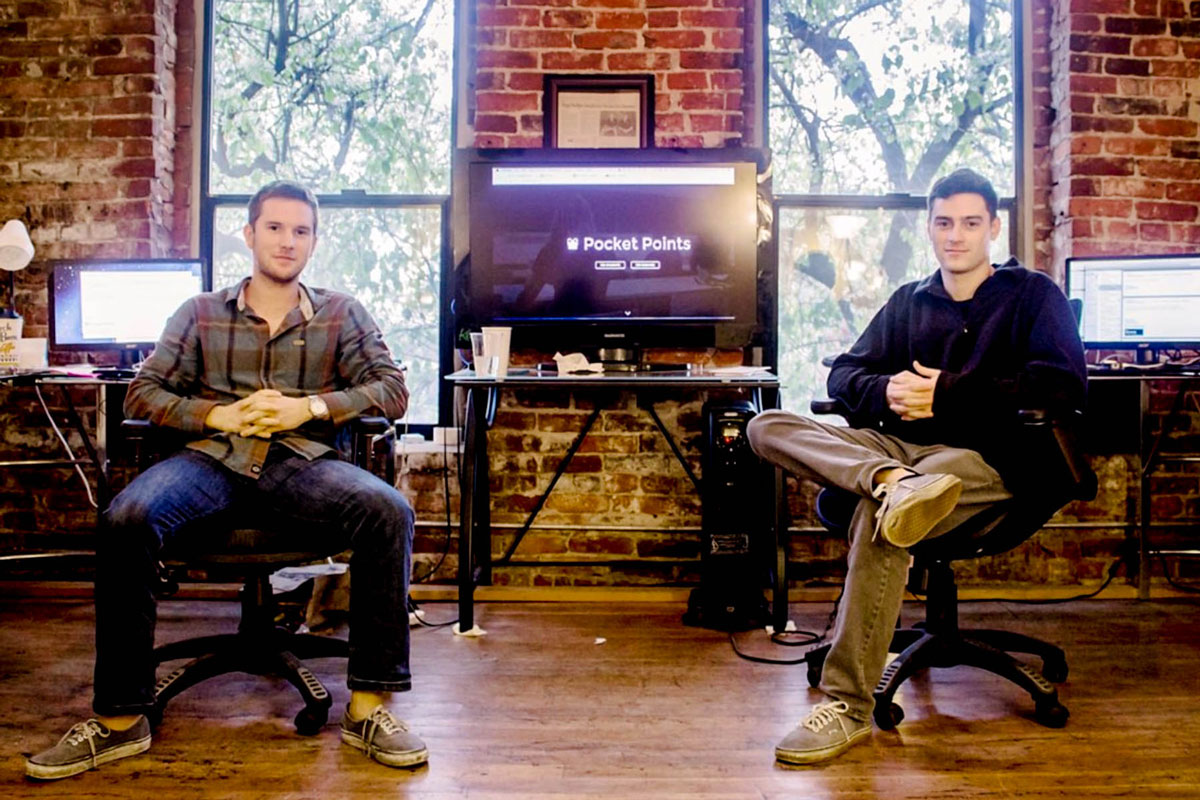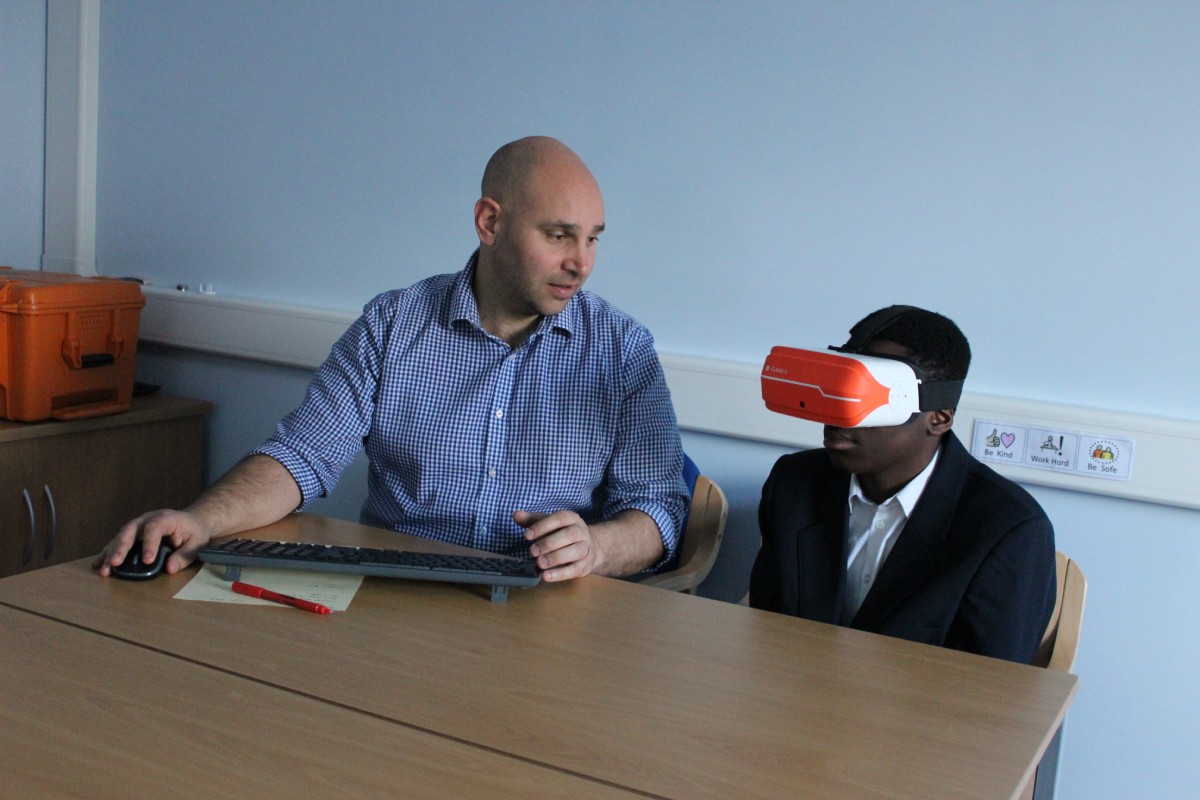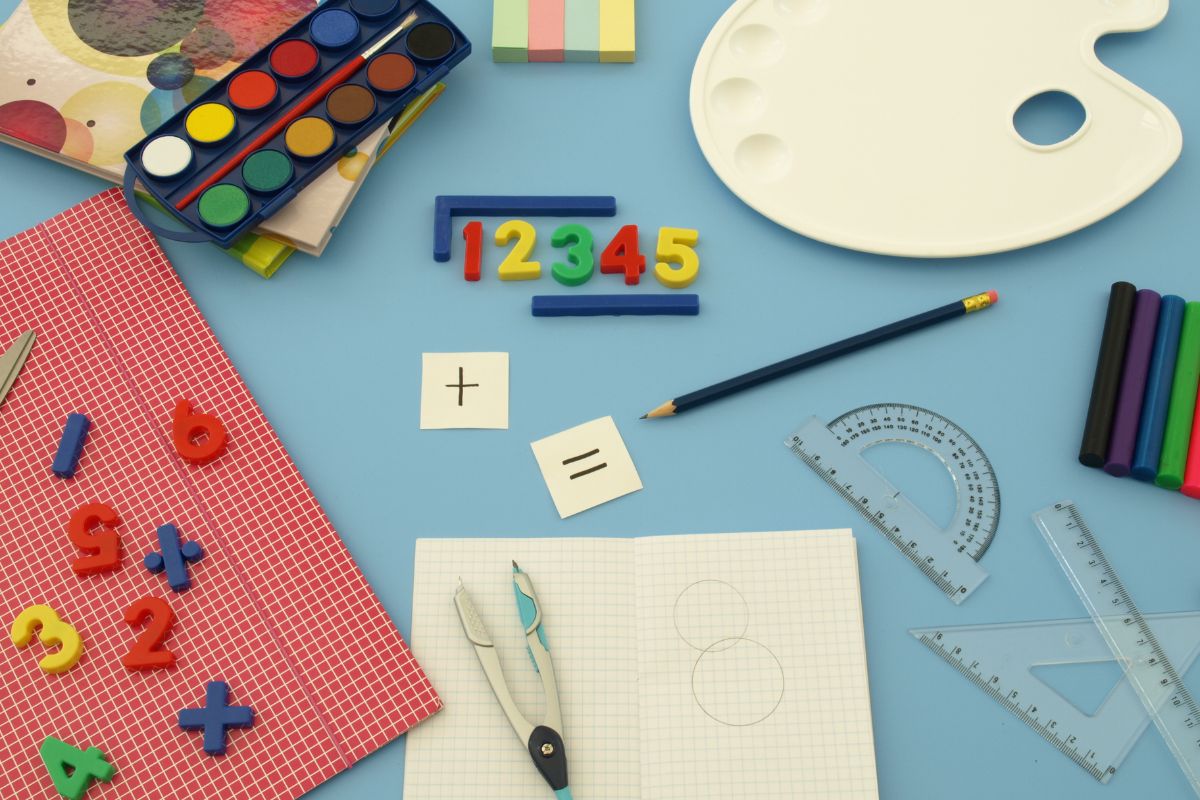3Doodler Brings a New Dimension to the Classroom
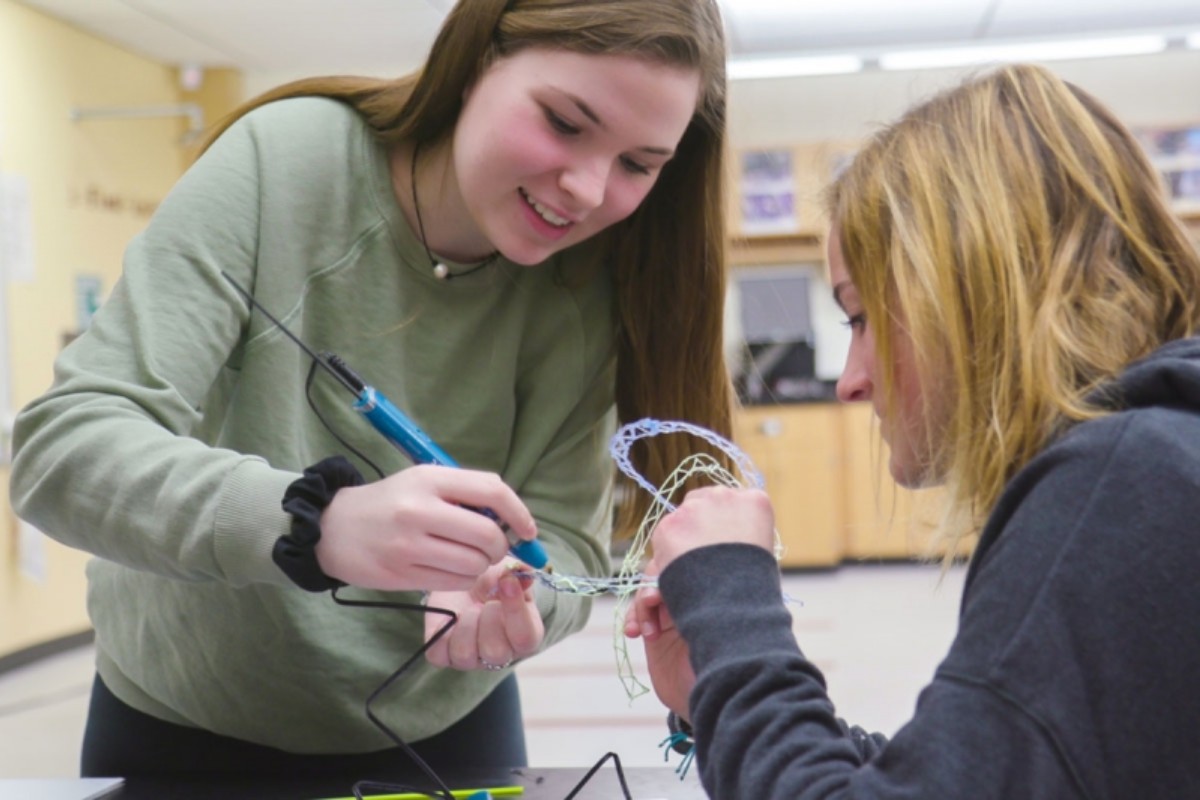
What if doodling didn’t have to be a distraction in the classroom or a sign that your students were losing interest in the lesson? What if rather than absentmindedly dragging a pen across paper to doodle, your students could lift their pens off the page and just keep drawing into the air? And what if you could harness that magic and use it to inspire hands-on learning experiences that leave a lasting impact on every student? With the 3Doodler, the world’s first 3D pen, we believe you can.
We’re proud to say that over 5,000 schools are already using the 3Doodler to give their students an engaging entry point into 3D creation, but we’d be lying if we said that was our goal when we first invented the 3D pen in 2012. At the time, we were just trying to fix a mistake.
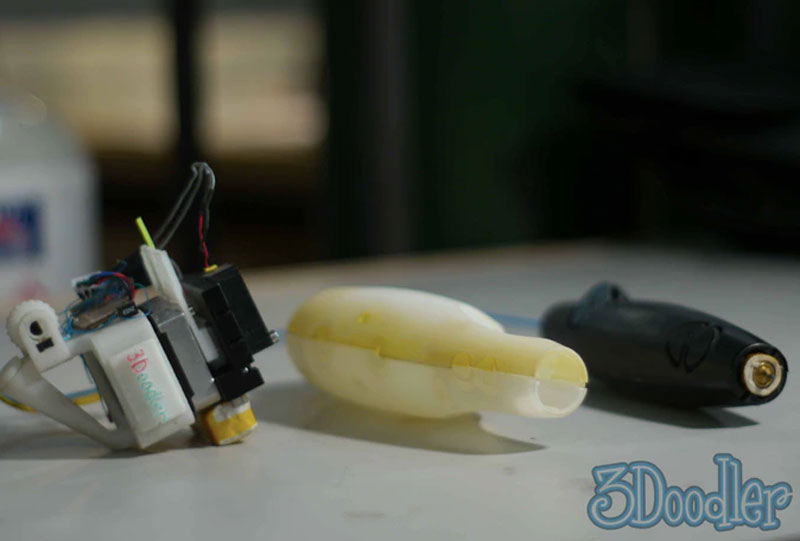
My partner Peter Dilworth and I were running a small R&D (research and development) company that sold inventions to toy manufacturers. We were hard at work constructing a massive walking robotic dinosaur, using our 3D printer to make the parts we needed. 3D printers work by slowly building up layers of material to create three-dimensional objects, so making giant dinosaur parts was a painstaking process. We had nearly finished printing out one of the dinosaur’s legs (a 14 hour print job) when the printer skipped a layer, meaning the part was ruined and we were going to have to start it again. In his frustration, Peter wondered aloud why we couldn’t just yank the extruder head off the printer and fill in the gap manually. That’s when it hit us. Why couldn’t we?
So, we tried it, and after we did, we started to wonder what else we could do with that flash of inspiration. The very next day we fashioned the first-ever 3D printing pen. That first prototype was an ungainly jumble of parts featuring the head of our now dismantled 3D printer, a heating element and a collection of gears. Even then, we wrote “3Doodler” on the side of the device. It worked badly, but it worked, drawing straight up into the air. We then became consumed with the concept and refocused our attention, spending months refining the pen until we had a compact device we knew could deliver the power of 3D creation to anyone at the push of a button and allow students to simply create what they imagine.
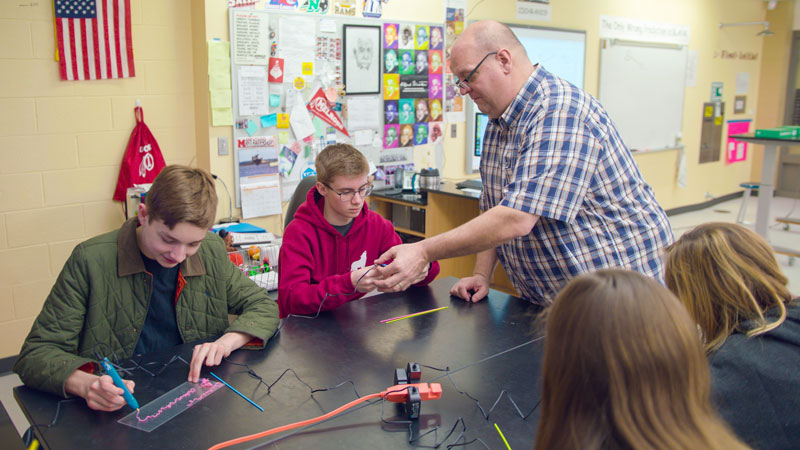
We were excited about the 3Doodlers, but we didn’t know if anyone else would be as well when we first introduced the 3D pen to the world by launching a Kickstarter campaign seeking $30,000 in crowdfunding to help cover the costs of manufacturing the initial run of pens. The response was overwhelming. Within hours, we sailed past our modest fundraising goal, and by the end of the campaign more than 26,000 people pledged over $2.3 million dollars to make our dream of making 3D drawing a reality. We thought that the 3Doodler would primarily appeal to artists and engineers, but putting the idea out into the world quickly taught us that there were so many more uses for this new tool than the ones we could envision. One group in particular that reached out to us to let us know how much the pen inspired them left us particularly intrigued – namely, educators.
Right from the beginning, teachers started contacting us to let us know how eager they were to use the 3Doodler for inexpensive and easy-to-use 3D creation in their classrooms. Math teachers told us they planned to use it for geometry lessons, history teachers wanted to use the pen for students to build models of ancient temples, art teachers were thrilled to have a new medium to introduce to their pupils, and physics teachers wanted to get their students doodling model bridges and roller coasters.
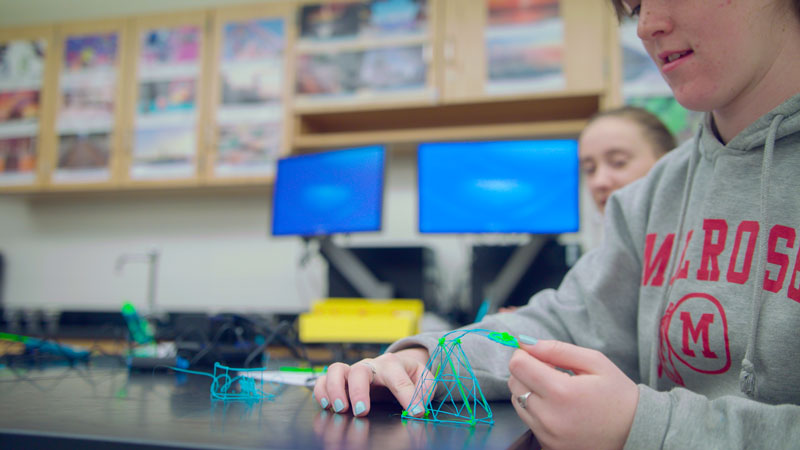
We couldn’t wait to see our pen spark creativity in schools. But, although the 3Doodler itself was the result of a happy accident and the attention from teachers was not something we anticipated, we did not want our engagement with schools to be haphazard. So, as soon as we started making mass-production pens we looked for opportunities to learn more about what we could do to ensure that teachers were getting everything they wanted from the device and that we were doing everything possible to enable hands-on and fun classroom experiences.
To understand more about what we could do to enhance the 3Doodler’s potential as an educational tool, we partnered with St. Augustine’s Catholic High School in the United Kingdom to run a pilot program introducing the technology across the school’s curriculum. The pilot program included about 150 high school students, most of whom had never used the pen before, and teachers who incorporated the pen into classes as wide ranging as math, physics, biology, business, engineering, art, textiles and design and technology. The program also featured a survey of all students involved to evaluate their reactions to the 3Doodler and its use in the classroom.
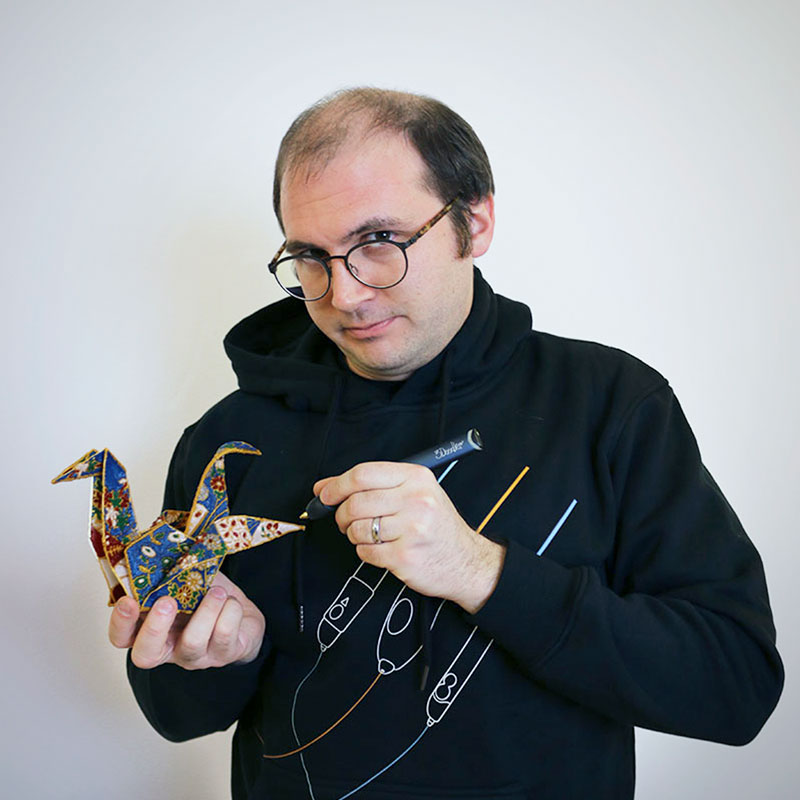
The results of the pilot program were encouraging, making us even more enthusiastic to keep working with educators. The student surveys revealed that students enjoyed working with the pen, and observations by St. Augustine’s teachers were even more galvanizing. Teachers found that using the pen increased student engagement and incentivized students to outperform their usual effort, spending more time on exercises than usual and even taking on additional work for higher marks. They further noted that the pen was able to bridge the gap between different types of learners, by introducing more seeing and doing into lesson plans. “The most significant result is that the 3Doodler bridged the gap between types of learners,” summarized Jacqueline Winn, the Head of Technology at St. Augstine’s. “Using the 3Doodler, Convergent and Divergent thinkers performed equally well in classes such as Physics. This stood in contrast to what we traditionally see in such subjects, where Convergent thinkers generally obtain better results.” Unexpectedly, educators at St. Augustine’s also saw evidence that using the 3Doodler helped level the playing field between male and female students in STEM classes and turned up hints that the pen enhanced levels of focus and concentration, even for students diagnosed with ADHD (Attention Deficit Hyperactivity Disorder).
Armed with the knowledge from the pilot program, as well as stories that poured in from educators across the U.S. and abroad of using the pen to teach things as disparate as cursive writing and how to make models of plant cells, we set about trying to figure out how we could make it even easier for educators to take advantage of the 3Doodler. By the time we launched the second version of the pen with a new Kickstarter campaign, we were ready. We put together special discounted “EDU Bundles” just for schools, libraries and makerspaces that contained enough pens, plastic and accessories to kit out a classroom for an entire year. When we subsequently launched the 3Doodler Start, our kid-oriented pen that uses an environmentally friendly plastic that melts at a much lower temperature to eliminate any hot parts, we made sure to put together educational bundles for those too, so that elementary schools could get in on the action.
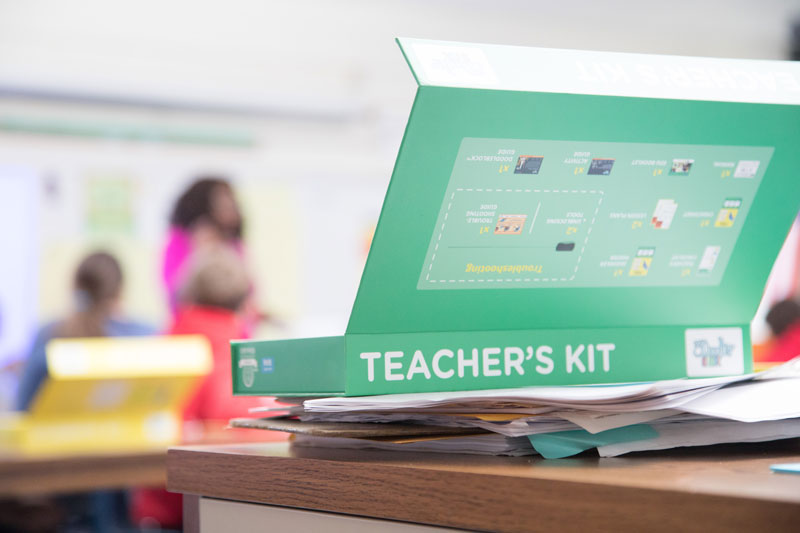
Once it became clear we were committed to supporting educators any way we could, the stories kept rolling in from teachers, bowling us over with their creativity and ingenuity in crafting 3Doodler-based lessons that pushed students toward visualization and teamwork. Eva Reilly, an English teacher in Phillips, Wisconsin challenged her high school students to create a model of their hometown as a way to learn about finding reliable sources for research. “They learned we need math in everything we do, not just in the classroom,” Reilly says. “Sometimes, quite frankly, they were confused as to whether they were in math, science, history, or English class, but the process sure kept them engaged!” A physics teacher in Melrose, Massachusetts, Blair Cochran Melrose, had his students use the pen to mock up 3D models of voltage in a circuit to clarify a concept his students typically struggled with. The challenge resource teacher at an elementary school in Windsor, Connecticut found the pen especially useful for students to demonstrate their ideas in 3D for an assignment in which students designed their own aquaponics system that could be used in someone’s apartment. A middle school technology teacher in rural Virginia introduced 3D printing concepts to her students with the 3Doodler before letting them loose on the software for traditional 3D printing. A special education teacher in Texas has used the 3Doodler Start, which carries a certification from the UK’s Royal National Institute of Blind People, to help blind students with a plethora of tasks from tactile mapping to explaining how computers work.
As much as we loved hearing inspiring stories from teachers who successfully introduced the 3Doodler into their classrooms, our 24/7 customer service team also heard from teachers about what they thought we could do better to make sure that educators had the best possible experience with the pen. And we listened. We hired a head of education to focus completely on serving educators, and her first order of business was completely redesigning our educational bundles to make sure that they were easy for teachers to use right out of the box. We are now on our fifth iteration of the original 3Doodler, known as the Create+, our third version of the 3Doodler Start pen, and our first version of the totally revamped Learning Packs.
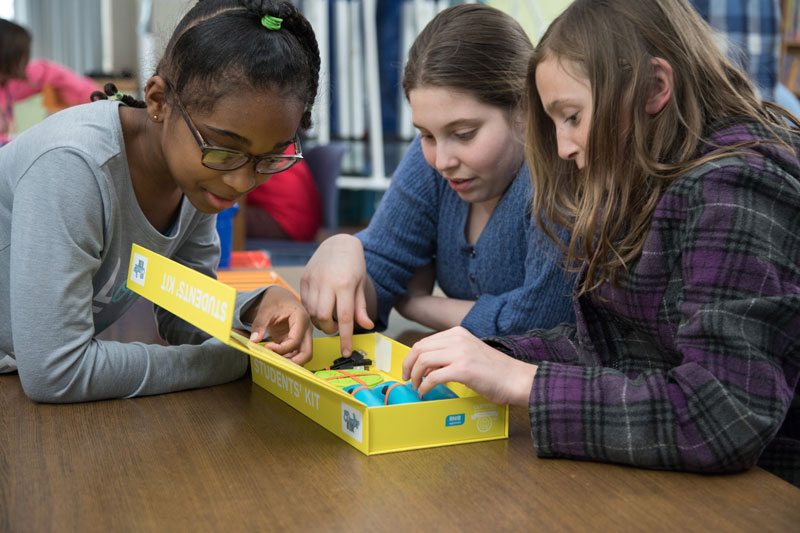
In order to redesign our educational package to ensure the Learning Packs would satisfy even the most particular educators, our head of EDU spoke to hundreds of teachers who gave their suggestions on the technology itself and the design of the bundles. Then we took a stab at putting together the new bundles and sent them out to all those teachers for further assessment before finalizing the changes.
All of our pens have been designed to be as simple to use as possible, and that quality was carried over every aspect of the redesigned Learning Packs. The new Learning Packs feature our most up-to-date pens, and are organized more intuitively and efficiently for the classroom to give teachers and students an easily accessible way to create from the moment they open the box. We took out what teachers found least useful in our original EDU Bundles to make room for new items that teachers clamored for. Each of the new Learning Packs contain a Teachers’ Kit, Students’ Kits and a Plastic Kit.
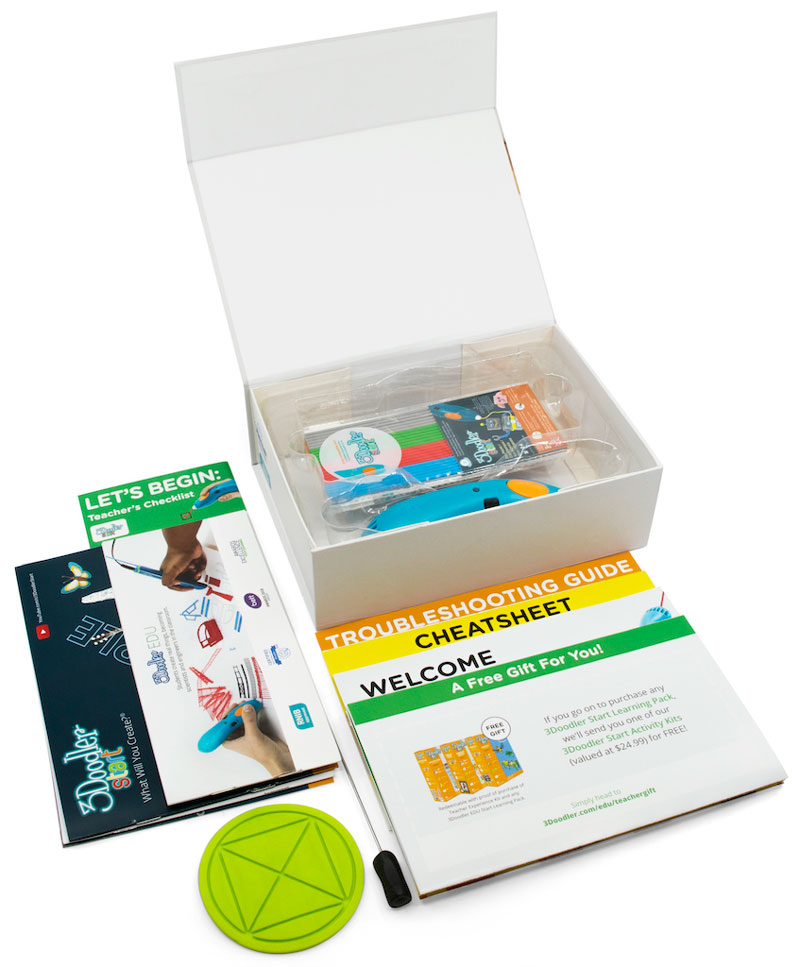
Before class, the teacher can peruse the Teachers’ Kit, which comes with a checklist of items to go through, a cheat sheet, lesson plans and activity guides. During the lesson, students can refer to a specially designed poster, included in the Learning Pack, on doodling basics or to the included troubleshooting guide and set of tools should they hit any snags. With multiple easy-to-grab Student Kits’ included in the Learning Pack, students can take control of their own educational journey with the 3Doodler, helping themselves to pens and accessories and choosing whatever color plastic suits from the huge assortment featured in the Plastics Kit. Unlike with the traditional 3D printer, each student can get their hands on their own 3Doodler pen, and they don’t have to wait to start creating in three dimensions.
With the Learning Packs ready to go, we didn’t stop thinking about how we can improve the 3Doodler experience for teachers and their students. We beefed up the curricular materials on our website to make using the 3Doodler even easier for busy teachers looking for ideas. Our website now boasts more than 90 lesson plans available free of charge to educators, written by teachers for teachers. We also made sure that these lesson plans note the curricular standards that were used in composing the plan, to make it even simpler to know if the lesson is right for you. In addition to the lesson plans, the website has stencils and video tutorials to further simplify the doodling experience.
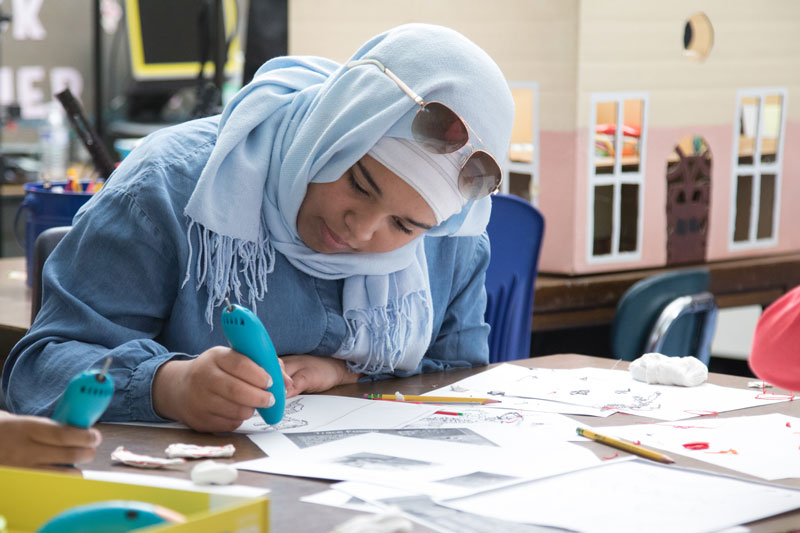
We’ve come a long way since that first ill-fated dinosaur leg, but we could not be more proud to have blossomed into a full-fledged education company. We are excited to provide a tool that helps students pay attention, have fun and learn diverse subjects in a hands-on manner. In fact, we believe that the possibilities for the 3Doodler in the educational environment are so boundless that we have recently made education the primary focus of our business. Our plan is to continue to partner with schools and support educators so that they can use the 3Doodler to help students think in new ways that will prepare them for the kinds of jobs that we can’t even imagine yet. Will your students be doodling in class soon? We sure hope so.
This article is available and can be accessed in Spanish here.




